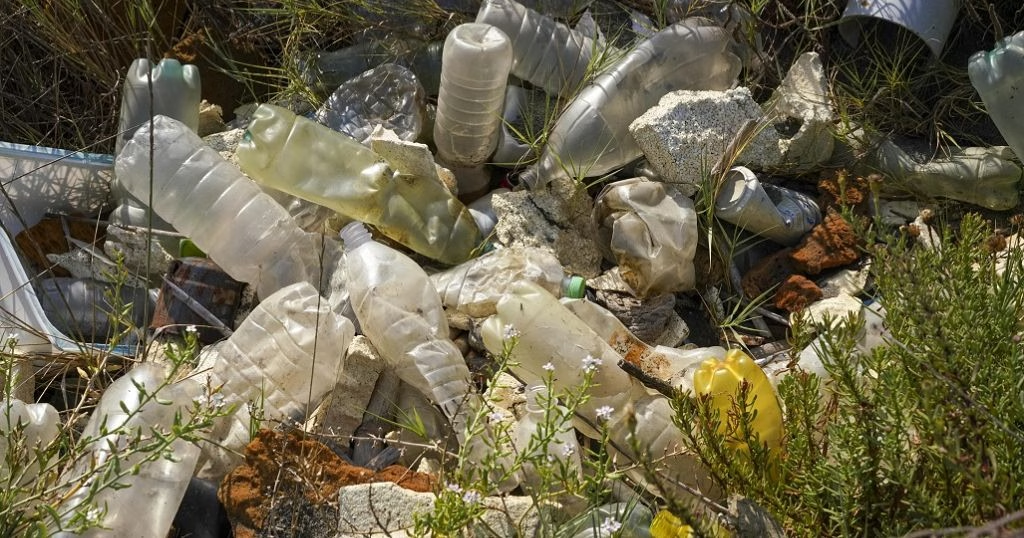
A wave of plastic bags, known locally as buveera, is spreading beyond cities in Uganda.
Kampala, the capital, has long struggled with buveera, which are now part of daily life.
They are visible in the soil of dug-up roads and clogging water channels.
Worryingly, plastic bags are also turning up on distant farmland, including in the thick plastic used to grow coffee seedlings.
As climate change worsens, the need for farming plastics—which are already crucial for many crops—is growing for some farmers.
Studies show that tiny microplastics harm ecosystems and enter the human body, causing concern for scientists, farmers, and consumers about health impacts.
Despite efforts to find solutions and recycle, industry experts say tracking and completely removing plastics are challenging tasks.
The United Nations Food and Agriculture Organization’s 2021 report found that soils are particularly affected by farming plastics, with some studies suggesting more microplastic in soils than in oceans.
“Microplastic is a major issue. Plastic waste is everywhere because of all the factories and bottling plants for water, juice, and energy drinks,” says Nicholas Kayondo, a crop scientist and farmer on the outskirts of Kampala.
Many farmers maintain that agricultural plastics, which are essential for crop production, will become even more vital as climate change leads to more extreme weather.
However, for those working the soil, the situation remains challenging.
Frustration is increasing among those working the soil where microplastics accumulate.
Scientists, farmers, and consumers share concerns about the impact of plastics in food on health, with ongoing research detecting their presence in the human body.
“We know microplastics are in our bodies, in our lungs, in our brains, and have been found in various locations. Current research is trying to understand the implications of this. A concern is that toxic chemicals can stick to microplastics and be transported into our bodies,” says Sarah Zack, a Great Lakes Contaminant Specialist with the Illinois-Indiana Sea Grant who educates the public about microplastics.
While researchers look for solutions, industry experts point out the difficulties of completely removing plastic waste, even with well-intentioned attempts to boost recycling and reuse.
Microplastic particles from sources like clothing, pharmaceuticals, and cosmetics can sometimes be found in fertilizers derived from the solid byproducts of wastewater treatment – known as biosolids – which can cause odor and toxicity problems for nearby residents, depending on the treatment methods used.
Some seeds are coated with plastic polymers designed to break down at certain times during the growing season, and plastics are used in pesticide containers and as water-retaining field covers.
Agriculture accounts for slightly more than three percent of all plastic usage globally, with approximately 40% of all plastics used for packaging, including single-use food and beverage containers.
Microplastics are defined by the National Oceanic and Atmospheric Administration as particles smaller than five millimeters, ranging from the size of a pencil eraser to much smaller.
Research shows microplastics can be absorbed by plants and plankton, consumed by animals and humans.
Scientists continue to study the long-term impacts of plastics found in human organs, and preliminary findings suggest potential links to heart disease and certain cancers.
Plastic usage has quadrupled over the last three decades, becoming an element ubiquitous in our environment, with most plastic waste ending up in landfills, polluting ecosystems, or being burned. Alarming, less than 10% of plastic is recycled.
At the same time, some farmers are relying more on plastic to protect their crops from extreme weather.
They use tarps, hoop houses, and other tools to control their growing environments, and also depend more on pesticides and fertilizers to combat unpredictable weather and rising pest populations.
Climate change speeds up the deterioration and movement of farming plastics, as intense sunlight can break them down and heavy rainfalls can wash plastic particles onto fields and waterways.
Taking action against plastic contamination is difficult for farmers. In Uganda, for example, nursery bed owners cannot afford proper seeding trays and they prefer to use cheap plastic bags for germinating seeds.
Farmers most affected by climate change are often least prepared to handle low-quality plastic waste in their soils.






